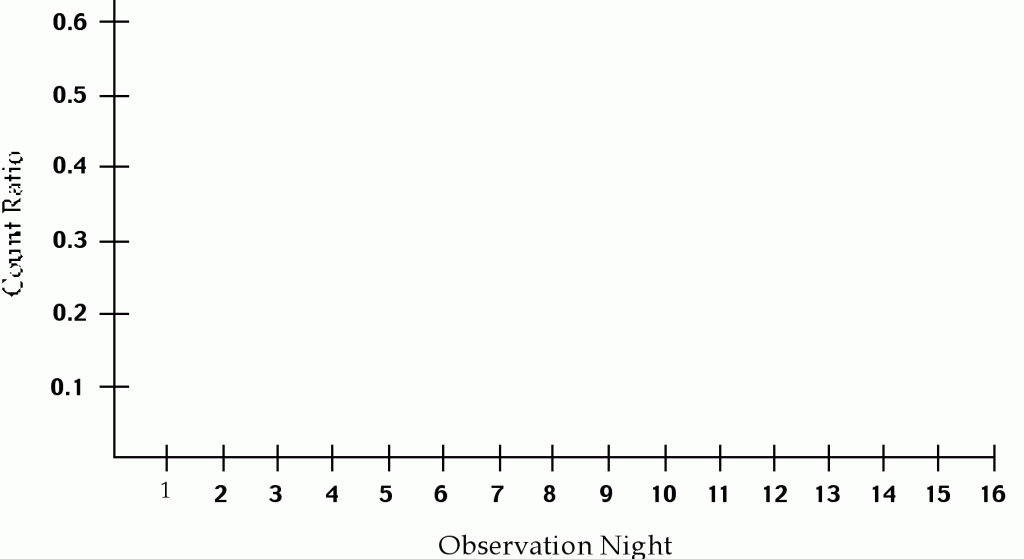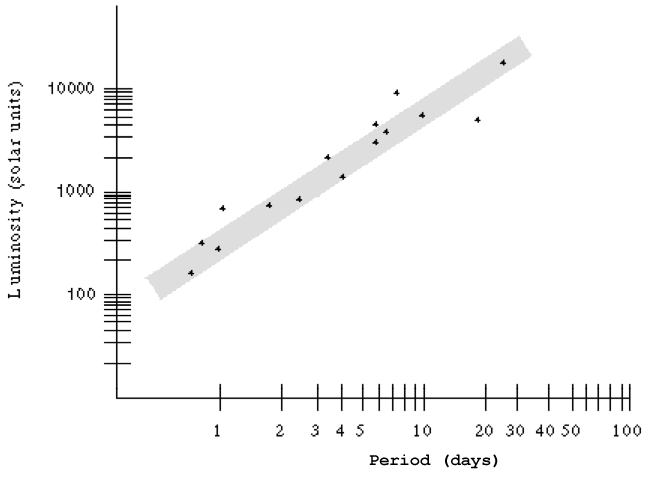AC4.5. A Cepheid Variable Star

Investigation AC4.5
Materials
- One of the image processing (IP) apps listed for A Changing Cosmos on the GSS software page.
- Images: Use “4Cepheid” folder images from the
jpg image set for A Changing Cosmos or- HOU04cepheid.zip
(includes may06cepheid, may08cepheid, may10cepheid, may11cepheid, may14cepheid, may15cepheid, may18cepheid, may21cepheid) - HOU04twoMoreCepheids.zip (20 images of HD189733)
- HOU04cepheid.zip
I. Plotting the Light Curve for a Cepheid
A Cepheid was monitored for a 15-day time span, but on only eight of those nights were the skies clear enough to get good images. You are to measure the brightness of the star on each image and create a light curve for the star. A light curve is a plot with brightness on the vertical axis and time (days) on the horizontal axis.
Perform the following procedure on each of the images listed below.
The name of the file gives you the date of observation.
may06cepheid, may08cepheid, may10cepheid,
may11cepheid, may14cepheid, may15cepheid,
may18cepheid, may21cepheid
Each file contains an image of the Cepheid star and a reference star observed on a given night. The Cepheid is the star on the left and the reference star is on the right.
4.26. Use the photometry tool to measure the brightness in counts of each Cepheid and reference stars. With the photometry tool selected, click on the center of each of the star images in turn. Record the data that appears in the “Photometry” window in a table like the one below.
Sample chart:

4.27. Find the brightness (intensity) value ratio, Bc / Br,, where Bc = the intensity value of the Cepheid and Br = the intensity value of the reference star.
4.28. Plot your series of intensity ratios and corresponding dates on a graph with axes like the blank graph shown below. Be careful to skip nights when dates are missing from the observations.
Sample graph:

4.29. What is the period of this Cepheid?
II. Find the Luminosity of a Cepheid

4.30. Use the Period-Luminosity diagram to estimate Luminosity (V) of the Cepheid measured in Activity I. Note: Both axes are logarithmic scales and luminosity is given in solar units; e.g., 1000 means 1000 times the luminosity of the Sun.
4.31. Use the value for the luminosity of the sun through a V filter to calculate L(V) of your Cepheid in Watts. L(V) of the Sun = 5.7 x 1025 Watts.
III. Find the Distance to a Cepheid
The apparent magnitude in V of the reference star is 8.0. From the Brightness Conversion Table, this is equivalent to an apparent brightness in V of 2.28 x 10-12 Watts/m2.
4.32. Calculate the apparent brightness of the Cepheid.
4.33. Use the luminosity in V for the Cepheid and the equation for apparent brightness to determine the distance, d, to the Cepheid in meters. (For the equation go to the Cepheid Variable Stars As Distance Indicators Discussion Sheet.)
4.34. Convert the distance to light years. (1 light year = 9.5 x 1015 m)

